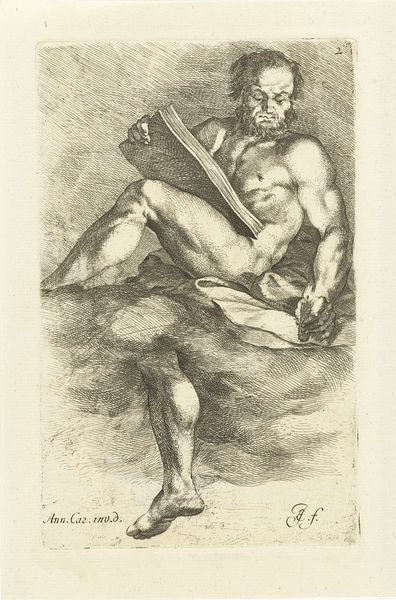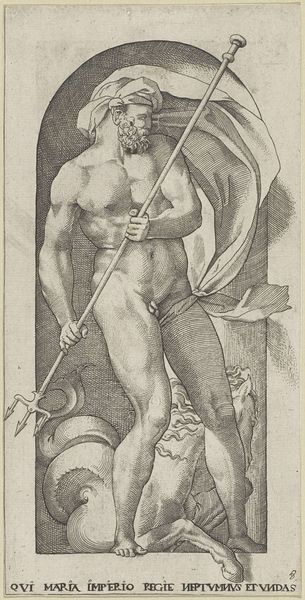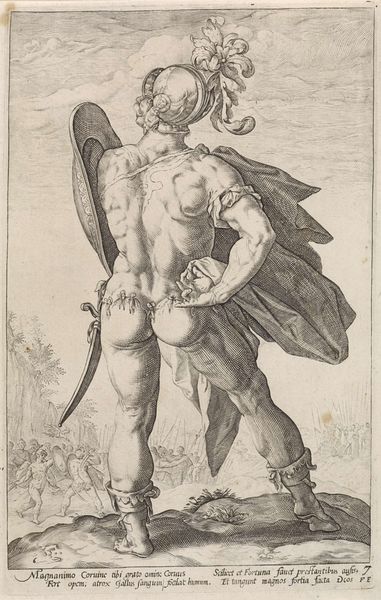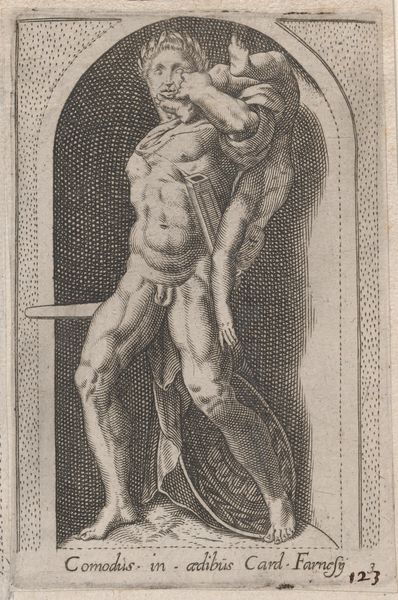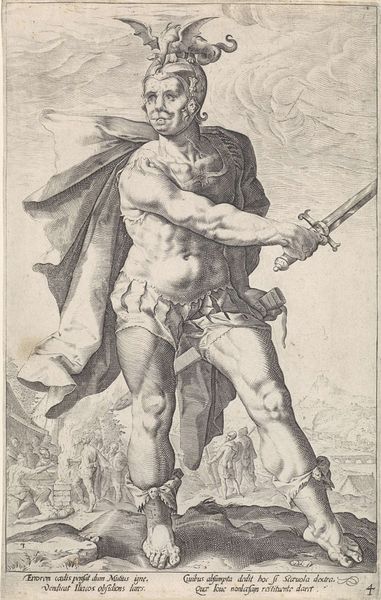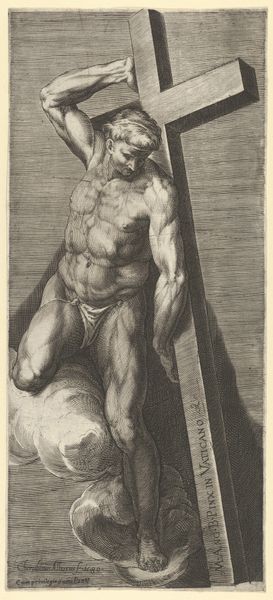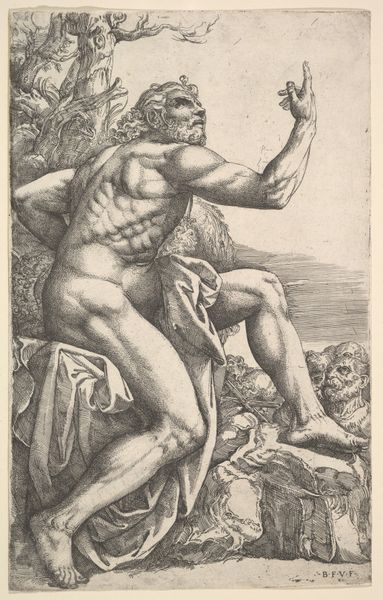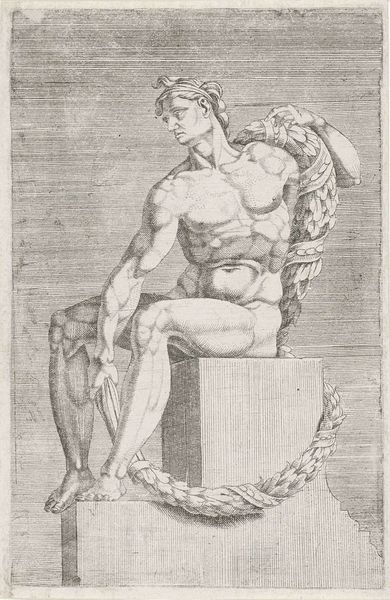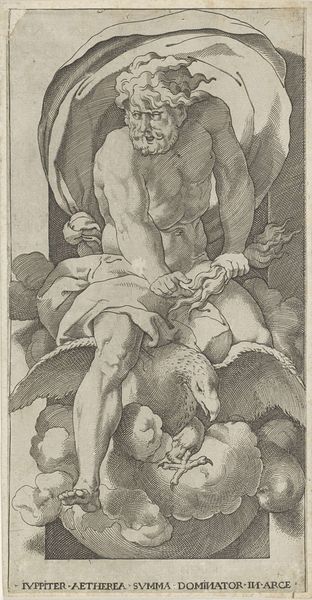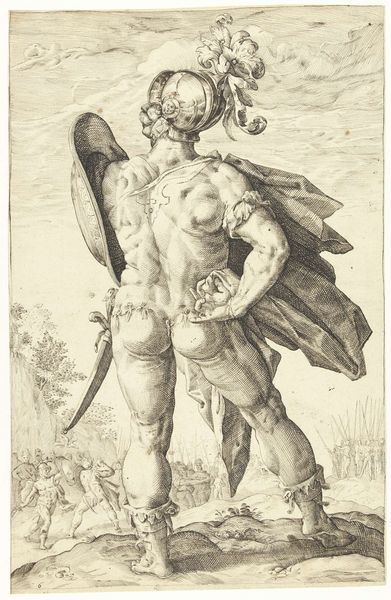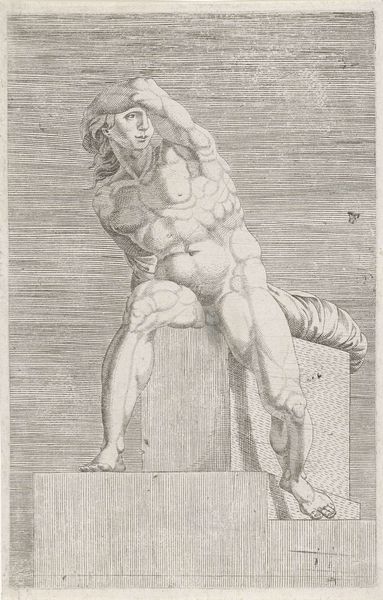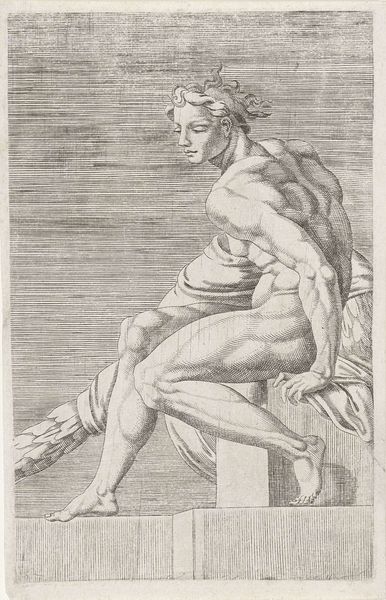
drawing, pen, engraving
#
portrait
#
drawing
#
figuration
#
11_renaissance
#
pencil drawing
#
pen
#
portrait drawing
#
history-painting
#
engraving
Dimensions: height 350 mm, width 246 mm
Copyright: Rijks Museum: Open Domain
Giulio Bonasone made this engraving, Heilige Andreas, sometime in the 16th century. He employed a printmaking process called engraving, which involved meticulously cutting lines into a metal plate, likely copper, using a tool called a burin. Engraving is a skilled tradition with a rich history alongside that of fine arts, and the ways in which the artist manipulates the burin dictate the depth and thickness of lines, creating variations in tone and texture. Looking closely, notice the cross-hatching used to build up shadows and define the musculature of Saint Andrew. The controlled precision of the engraved line lends itself well to depicting the human form, and adds drama to the scene. The labor-intensive process of engraving stands in contrast to the mass production of prints, which allowed for the wide dissemination of images, influencing artistic styles and religious beliefs. By appreciating the technical skill and labor involved, we can recognize the significance of both the image and the means of its production.
Comments
No comments
Be the first to comment and join the conversation on the ultimate creative platform.
